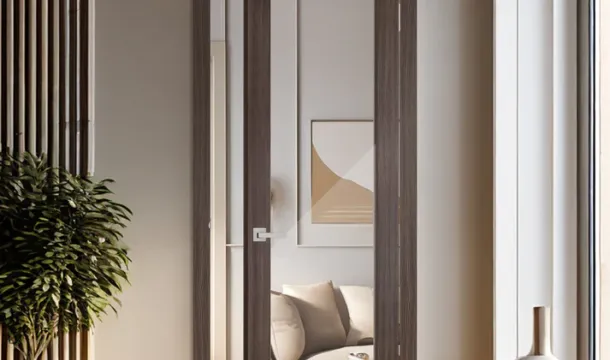How Humidity Affects Wooden Interior Doors and Their Longevity
Popular Articles
Maintain indoor humidity between 30% and 50% to protect wooden interior doors from warping, swelling, or cracking. Fluctuations beyond this range cause wood fibers to expand or contract, compromising door alignment and hardware function.
Wood absorbs moisture from the air, which leads to dimensional changes. In humid environments typical of Canadian summers or poorly ventilated spaces, doors can swell by up to 5%, resulting in sticking frames and difficulty closing. Conversely, low humidity during dry winters can dry out wood excessively, causing splits and gaps.
Applying a high-quality sealant or finish acts as a barrier against moisture penetration, reducing the impact of humidity cycles. Combining this with proper ventilation in rooms like bathrooms and kitchens extends door durability significantly. Choosing engineered wood doors with laminated cores also improves resistance to environmental changes compared to solid wood options.
Humidity Impact on Wood Expansion
Wood absorbs moisture from the air, causing it to expand; this expansion can range between 0.1% and 0.3% across the grain for a 10% increase in relative humidity. For an interior door measuring 80 inches tall and 36 inches wide, this translates into up to a quarter-inch swelling horizontally, enough to cause sticking or difficulty closing.
Different wood species vary in their dimensional response: softwoods like pine swell more than hardwoods such as oak or maple due to higher porosity and fiber structure. Selecting stable species reduces excessive movement but does not eliminate it entirely.
To minimize warping and binding caused by humidity-driven expansion, maintain indoor relative humidity between 30% and 50%. Use dehumidifiers during humid summers and humidifiers in dry winters to stabilize moisture levels around wooden doors.
Proper door installation must include clearance allowancestypically at least 1/8 inch on all sidesto accommodate seasonal size fluctuations without compromising function or finish integrity.
Sealing all surfaces of the door with quality finishes further limits moisture penetration, reducing expansion rates. Regular inspection of seals and refinishing every few years prolongs the door's dimensional stability over its lifespan.
Preventing Warping and Cracking
Maintain indoor relative humidity between 40% and 60% to minimize dimensional changes in wooden doors. Use a reliable hygrometer to monitor levels, especially during seasonal shifts. Installing a humidifier or dehumidifier helps stabilize moisture content, preventing sudden wood movement that leads to warping or cracking.
Seal all surfaces of the doorincluding edges and top/bottom railswith a high-quality penetrating wood finish or varnish. This creates a moisture barrier that slows water vapor exchange, reducing stress on the wood fibers. Reapply finishes every 23 years or as wear becomes visible.
Avoid direct exposure to water sources such as bathroom steam or kitchen splashes by installing door sweeps and weatherstripping. Proper ventilation near these areas also lowers ambient moisture around the door frame.
Installation and Maintenance Tips
Ensure door frames are square and allow for proper clearance (typically 1/8 inch on each side) so doors can expand without binding. Using adjustable hinges can compensate for minor shifts caused by humidity variations.
Check periodically for small cracks or edge splits; address them immediately with wood filler designed for interior use followed by refinishing. Early repair prevents deeper fissures that compromise structural integrity.
Maintaining Doors in Humid Environments
Apply a high-quality water-resistant finish, such as marine-grade polyurethane or spar varnish, to all door surfaces including edges and tops. This creates a protective barrier that limits moisture absorption and reduces the risk of swelling.
Ensure proper ventilation around doors by installing adjustable air vents or using dehumidifiers in rooms prone to high humidity. Maintaining indoor relative humidity between 40% and 60% helps stabilize wood moisture content.
Routine Inspections and Adjustments
Check door frames, hinges, and seals monthly for signs of moisture damage or looseness caused by wood expansion. Tighten hardware if necessary and replace worn weatherstripping to maintain airtight closure.
Trim any door bottoms that begin to rub against the floor due to slight swelling, but only after confirming stable humidity levels to prevent repeated adjustments.
Material and Hardware Considerations
Opt for engineered wood doors with multi-layer construction designed to resist warping under humidity fluctuations. Use corrosion-resistant hinges and screws made from stainless steel or brass to prevent rust in moist conditions.
Avoid installing solid hardwood doors in bathrooms or laundry areas without supplemental ventilation systems; consider moisture-resistant composite alternatives instead.
Popular Articles

Soundproofing Interior Doors: Which Options Are Best for Your Home?

Choosing the Perfect Interior Doors for Your Canadian Home
